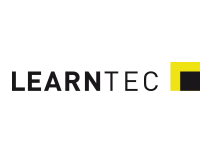Same Same but Different
Focus on people - with and despite AI, VR & Co.
Sünne Eichler, LEARNTEC Congress Committee, on current developments in the industry:
Not a day goes by without learning about a new AI tool, being introduced to new possibilities in VR or discussing current developments in LMS and LXP. It's a very exciting time right now and it's fun to try out the many new possibilities and use them in learning settings.
AI has a disruptive effect and offers us opportunities to not only create content more efficiently, but it also has a deeper impact on learning strategies. At the LEARNTEC congress, we have been making it clear for some time that learning and working are growing together. We need to bring learning to the workplace so that our learners can access learning content on demand. Learning opportunities can be tailored to our learners in terms of content and preferred learning format.

Digital learning concepts include - of course - digital technologies. There are countless innovative and pragmatic solutions for this on the LEARNTEC exhibition floor. You can literally feel the enthusiasm for innovation that is being brought about by the new possibilities of AI & Co. At the congress, we will therefore naturally also be focusing on topics such as AI in Learning & Development, Live Prompting and Gamification and Large Language Models. AI is finding its way into all areas of modern learning. However, this does not change the fact that we are dealing with learning HUMANS.
Technology or not - we have to take people with us. Therefore, the change in learning culture and the importance of targeted change management is an important part of ensuring that digital learning gains more acceptance. This also applies to the use of new possibilities such as AI and VR. We need to look at the strategic direction of our learning opportunities. Only if we manage to consistently align our learning opportunities and learning settings with the strategic issues of the organization will we receive the support of all stakeholders - from management to learners. Our learning design must be geared towards the needs of the learners and create sustainable learning experiences - in other words, enthusiasm and motivation.
Learning design means developing learning paths in such a way that learners receive exactly the content they need for their work. And preferably not according to the “one fits all” method, but according to the “mass customization” principle. This includes providing the right content at the right time and in the right place. A sensible combination of forms of learning is needed that corresponds to current needs. New learning, smart learning and agile learning are important approaches in this context.

Learning design also closes the circle between people and technology. A learning guide can be a physical person who helps learners to develop their own learning goals. At the same time, however, I can also provide a digital learning companion in the form of a chatbot that answers individual questions and also enables individual learning paths with adaptive learning. The importance of content curation also comes into play here: we have to curate the content using the seek-sense-share method, for example, so that learners can find the content they need. This is definitely a challenge when using AI: the faster we can create content, the more we might “flood” our learning platforms with content.
That is the exciting thing about modern learning concepts - whether they are based on the new or smart learning approach, pragmatic and strategic - we need the personal and digital components! This is the only way we can create successful learning experiences and generate real benefits for learners and organizations. Because that must be our goal!

